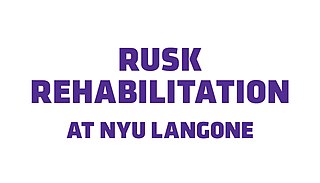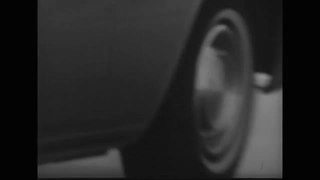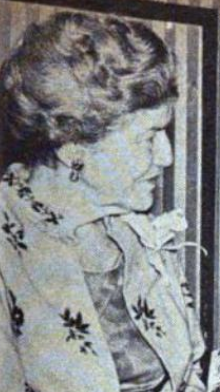
Assistive technology (AT) is a term for assistive, adaptive, and rehabilitative devices for people with disabilities and the elderly. Disabled people often have difficulty performing activities of daily living (ADLs) independently, or even with assistance. ADLs are self-care activities that include toileting, mobility (ambulation), eating, bathing, dressing, grooming, and personal device care. Assistive technology can ameliorate the effects of disabilities that limit the ability to perform ADLs. Assistive technology promotes greater independence by enabling people to perform tasks they were formerly unable to accomplish, or had great difficulty accomplishing, by providing enhancements to, or changing methods of interacting with, the technology needed to accomplish such tasks. For example, wheelchairs provide independent mobility for those who cannot walk, while assistive eating devices can enable people who cannot feed themselves to do so. Due to assistive technology, disabled people have an opportunity of a more positive and easygoing lifestyle, with an increase in "social participation", "security and control", and a greater chance to "reduce institutional costs without significantly increasing household expenses." In schools, assistive technology can be critical in allowing students with disabilities to access the general education curriculum. Students who experience challenges writing or keyboarding, for example, can use voice recognition software instead. Assistive technologies assist people who are recovering from strokes and people who have sustained injuries that affect their daily tasks.
Occupational therapists (OTs) are health care professionals specializing in occupational therapy and occupational science. OTs and occupational therapy assistants (OTAs) use scientific bases and a holistic perspective to promote a person's ability to fulfill their daily routines and roles. OTs have training in the physical, psychological, and social aspects of human functioning deriving from an education grounded in anatomical and physiological concepts, and psychological perspectives. They enable individuals across the lifespan by optimizing their abilities to perform activities that are meaningful to them ("occupations"). Human occupations include activities of daily living, work/vocation, play, education, leisure, rest and sleep, and social participation.

Occupational therapy (OT) is a healthcare profession that involves the use of assessment, intervention, consultation, and coaching to develop, recover, or maintain meaningful occupations of individuals, groups, or communities. The field of OT consists of health care practitioners trained and educated to support mental health and physical performance. Occupational therapists specialize in teaching, educating, and supporting participation in activities that occupy an individual's time. It is an independent health profession sometimes categorized as an allied health profession and consists of occupational therapists (OTs) and occupational therapy assistants (OTAs). OTs and OTAs have different roles, with OTs licensed to complete comprehensive occupational therapy evaluations. Both professionals work with people who want to improve their ability to participate in meaningful occupations.

Physical medicine and rehabilitation (PM&R), also known as physiatry, is a branch of medicine that aims to enhance and restore functional ability and quality of life to people with physical impairments or disabilities. This can include conditions such as spinal cord injuries, brain injuries, strokes, as well as pain or disability due to muscle, ligament or nerve damage. A physician having completed training in this field may be referred to as a physiatrist.

Rusk Rehabilitation is the world's first and among the largest university-affiliated academic centers devoted entirely to inpatient/outpatient care, research, and training in rehabilitation medicine for both adults and pediatric patients. The system is part of the NYU Langone Medical Center and operated under the auspices of the Department of Rehabilitation Medicine of the New York University School of Medicine. The Rusk Institute is named in honor of its founder, Howard A. Rusk.
Project Magic is a program, designed by David Copperfield, where teams of magicians and occupational therapists work together to teach sleight of hand to people with disabilities to aid in their rehabilitation and help the patients build self-esteem. The tricks taught in Project Magic were designed to help improve dexterity, coordination, visual perception, spatial relationships, and cognitive skills, with specific magic tricks developed for varying disabilities.

Equine-assisted therapy (EAT) encompasses a range of treatments that involve activities with horses and other equines to promote human physical and mental health. Modern use of horses for mental health treatment dates to the 1990s. Systematic review of studies of EAT as applied to physical health date only to about 2007, and a lack of common terminology and standardization has caused problems with meta-analysis. Due to a lack of high-quality studies assessing the efficacy of equine-assisted therapies for mental health treatment, concerns have been raised that these therapies should not replace or divert resources from other evidence-based mental health therapies. The existing body of evidence does not justify the promotion and use of equine-related treatments for mental disorders.
Neurorehabilitation is a complex medical process which aims to aid recovery from a nervous system injury, and to minimize and/or compensate for any functional alterations resulting from it.

Swami Vivekanand National Institute of Rehabilitation Training and Research (SVNIRTAR) is an autonomous institute functioning under the Ministry of Social Justice and Empowerment of India. It is located in Olatpur, 30 km from Cuttack.
Pandit Deendayal Upadhyaya National Institute for Persons with Physical Disabilities (Divyangjan) (P.D.U.N.I.P.P.D.) is an autonomous organisation under the administrative and financial control of Ministry of Social Justice and Empowerment, government of India.

Over time, the approach to cerebral palsy management has shifted away from narrow attempts to fix individual physical problems – such as spasticity in a particular limb – to making such treatments part of a larger goal of maximizing the person's independence and community engagement. Much of childhood therapy is aimed at improving gait and walking. Approximately 60% of people with CP are able to walk independently or with aids at adulthood. However, the evidence base for the effectiveness of intervention programs reflecting the philosophy of independence has not yet caught up: effective interventions for body structures and functions have a strong evidence base, but evidence is lacking for effective interventions targeted toward participation, environment, or personal factors. There is also no good evidence to show that an intervention that is effective at the body-specific level will result in an improvement at the activity level, or vice versa. Although such cross-over benefit might happen, not enough high-quality studies have been done to demonstrate it.
The profession of occupational therapy was established in India in 1950. Despite its 70 years of existence in India, the profession has gained momentum in the healthcare sector of India only in the past decade.

Vocational rehabilitation, also abbreviated VR or voc rehab, is a process which enables persons with functional, psychological, developmental, cognitive, and emotional disabilities, impairments or health disabilities to overcome barriers to accessing, maintaining, or returning to employment or other useful occupations.
Eleanor Clarke Slagle was an American social worker and an early pioneer of occupational therapy.
The University of Alberta Faculty of Rehabilitation Medicine, located in Edmonton, Alberta, Canada, is home to North America's only free-standing faculty of rehabilitation medicine and is composed of three departments, 11 research groups, six student clinics and programs and five institutes and centres. It provides academic training in rehabilitation science, physical therapy, occupational therapy and speech-language pathology.
Elnora M. Gilfoyle is a retired American occupational therapist, researcher, educator, and university administrator. She worked at several hospitals before accepting a professorship at Colorado State University, later serving as Dean of the College of Applied Human Sciences and Provost/Academic Vice President at that university. She is also a past president of the American Occupational Therapy Association. With research interests in child development, developmental disabilities, and child abuse, she has led studies on the state and federal levels. The co-author of two books and many articles, she was inducted into the Colorado Women's Hall of Fame in 1996.

Kamala Vishnu Nimbkar, born Elizabeth Lundy, was an American-born occupational therapist in India.

Margaret Sigrid Rood was an American occupational and physical therapist. She developed techniques for treating central nervous system dysfunction, now known as Rood techniques or Rood's approach.

Elizabeth Eckhardt May was an American home economist, educator, and college administrator. She was dean of the School of Home Economics at the University of Connecticut from 1952 to 1964, and before that academic dean of Hood College in Maryland. Her research and writing involved rehabilitation and work supports for disabled women.

Clare Spencer Spackman was an American occupational therapist. She and Helen S. Willard) co-wrote Principles of Occupational Therapy (1947), a textbook widely used in the field. She was president of the World Federation of Occupational Therapists from 1957 to 1962, and a professor at the University of Pennsylvania.












